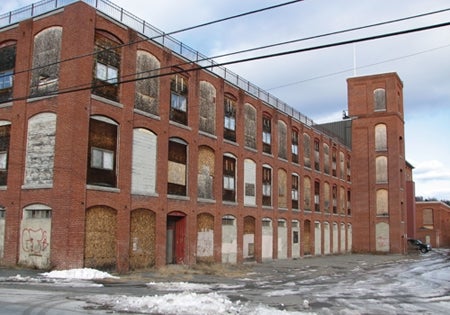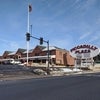Fitchburg Debates Smartness Of Smart Growth
 Photo/Brandon Butler
Some officials in Fitchburg hope adopting a smart growth overlay district will help buildings like these attract new businesses.
Photo/Brandon Butler
Some officials in Fitchburg hope adopting a smart growth overlay district will help buildings like these attract new businesses.
Fitchburg City Council President Stephan Hay said the city doesn’t have anything to lose by enacting a controversial smart growth zoning district in this old mill city along the Nashua River.
“I’m of the opinion that if something isn’t working now, you should change it and try something else,” Hay said.
So, while Hay has some concerns with the new zoning legislation that would allow residential construction by-right in a specific area of town, he has vowed to support it.
Fitchburg has more than 1 million square feet of undeveloped or underdeveloped mill space along the city’s River Street corridor, less than a half-mile northwest of the city’s downtown Main Street.
Pros And Cons
For the past four years officials in the city’s community development office have been working with Boston-based Concord Square Development to create a smart growth zoning plan for the area, which runs adjacent to the Nashua River.
The plan would allow residential construction by right in the more than a half-dozen vacant mills in the city. Under the new program, a developer, upon a site plan review from the planning board, would be allowed to construct residential units by right.
And, as an incentive from the state, if the city adopts the overlay district, Fitchburg would receive about $600,000 in incentive payments from the state’s Smart Growth Trust Fund, which has been built up from the sale of excess state property.
While the city has spent about $50,000 in federal grant money creating the legislation, getting it passed through the 11-member city council was the sticking point. The council narrowly rejected the ordinance in a 5-5 vote in November.
Upon reconsideration of the issue in December, however, the measure passed in an 8-3 vote. Some councilors changed their minds after verifying that the city could actually receive state supplemental funding for passing the measure.
Joseph Solomito, a local attorney who represents the northern area of the city, voted against the ordinance twice. He’s just not convinced the zoning changes will spur development. What it will do, he said, is limit a resident’s rights to voice concerns about a project.
“If we really want development I think we need to be offering tax breaks, tax incentive programs, give these developers an incentive to come in,” Solomito said.
Other councilors who opposed the overlay district also cited the need for commercial and industrial development in the city, not just more affordable housing.
Two mills in the area already have potential suitors, with plans being privately developed for their conversion into residential units.
City Community Development Director David Streb said the benefits of the smart growth program outweigh the concerns.
“Adopting this overlay district provides a certainty about the permitting process for the developer,” Streb said. “...In my estimation, it would be a means to help with what we’d all like to see: The redevelopment of those buildings.”
Mayor Lisa Wong is also pushing for adoption of the ordinance.
She said residential construction is a good way to encourage commercial development.
Wong said she thinks residents in the city would rather see development in the area than the blighted, vacant buildings as they currently stand.
At least 32 communities have identified more than 11,000 units of possible construction that could be developed under the smart growth zoning. Already 16 communities have received some funding from the Smart Growth Trust Fund, which sits at $4 million and pays money out to communities that adopt 40-R districts that are approved by the state.
Stephen Bishop, town planner in Grafton, said after adopting a 40-R district the town received a $350,000 check from the state to put toward a cleanup of a brownfields site as well as other grants.
While no developers have signed on to develop the project yet, Bishop said the smart growth zoning allowed the town to leverage other grant opportunities. And it’s allowed the town to clean the site up and prepare it for development, work that a developer now does not have to do.
“I think it’s definitely helped with the marketability of the site, it has definitely changed the site from the perspective of an investment opportunity that is a lot more attractive to developers now,” he said.
Web Exclusive: Check out a video clip from our visit to Fitchburg and learn more about Fitchburg's smart growth initiative:









0 Comments